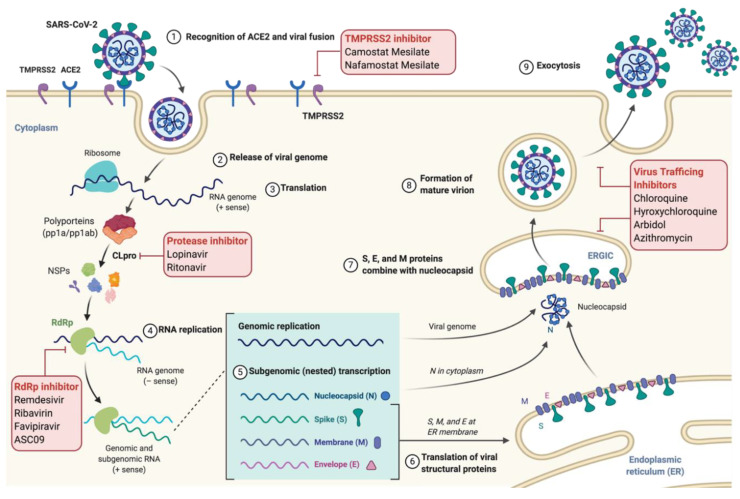Figure 3.
Graphical abstract depicting the SARS-CoV-2 replication cycle and site of action for widely studied drugs against COVID-19. (1) The virus enters the host cell by recognizing the ACE2 receptor via spike glycoprotein which induces membrane fusion, resulting in (2) release of viral genome in the cytoplasm. (3) The viral RNA undergoes translation to form polyproteins, which are then cleaved by the viral protease enzyme (CLpro) to form nonstructural proteins like RdRp for replication of viral RNA. Positive sense of viral RNA then undergoes translation to form structural proteins (N, S, M, and E) where S, M, and E are processed in ER (6), while N protein is processed in the cytoplasm where it assembles with a viral RNA replicon. All components are then combined inside the ER-golgi intercompartment (ERGIC) (7), from which virions are released inside the vesicles (8) and secreted outside the cell via exocytosis (9). ACE2: Angiotensin Converting Enzyme 2; TMPRSS2: Type 2 Transmembrane Serine Protease; NSPs: Non-structural proteins; RdRp: RNA dependent RNA polymerase; and CLPro: Coronavirus Protease.

